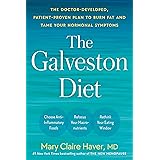Have you ever paused to consider why the milk in your refrigerator undergoes a specific heating process before it reaches your home? Many consumers frequently ponder the nuances of milk pasteurization, a critical step in modern food production. This fundamental process, designed to enhance both safety and longevity, is a topic of widespread interest, particularly concerning organic dairy products.
The video above features an expert from Organic Valley who clearly explains what pasteurization entails and why it is universally adopted for milk. Expanding on this essential information, we delve deeper into the historical context, scientific principles, and consumer benefits associated with this vital food safety measure.
Understanding Milk Pasteurization: A Cornerstone of Food Safety
Pasteurization represents a heat treatment process primarily designed to eliminate pathogenic microorganisms, such as certain bacteria, from perishable foods and beverages. This method significantly contributes to public health by drastically reducing the risk of foodborne illnesses. Historically, before the widespread adoption of pasteurization, milk was a common vehicle for diseases like tuberculosis, diphtheria, and typhoid fever.
The practice of pasteurization gained prominence in the dairy industry beginning in the 1920s, transforming how milk was processed and consumed globally. Its implementation marked a pivotal moment in ensuring a safer food supply. Consequently, it not only bolstered food safety but also substantially extended the typical shelf life of various products, including juice, beer, kosher wine, and, most notably, milk.
This process does not sterilize milk completely; instead, it reduces the bacterial load by an impressive 99.9%. This reduction is precisely why pasteurized milk still requires refrigeration and has a finite shelf life, unlike truly sterilized products that can be stored at room temperature for much longer durations.
The Nutritional Impact of Pasteurization on Milk
A frequent concern among consumers revolves around the potential nutritional degradation of milk during pasteurization. It is important to note that neither common pasteurization method significantly diminishes the essential nutritional benefits of milk. Milk remains a rich source of calcium, protein, vitamin D, and other vital nutrients even after undergoing heat treatment. The temperatures and durations involved are carefully calibrated to target harmful microorganisms while preserving the majority of the milk’s nutritional profile and its characteristic flavor.
Furthermore, pasteurization involves no chemical additives. The process relies solely on heat to achieve its safety objectives, making it a natural and effective method of preservation. This addresses another common misconception, reassuring consumers that their milk remains wholesome and free from unwanted chemical interventions.
Exploring the Two Main Types of Milk Pasteurization
Within the dairy industry today, two principal methods of pasteurization are employed: High-Temperature, Short-Time (HTST) pasteurization and Ultra-High Temperature (UHT) pasteurization. Both techniques achieve the critical goal of pathogen reduction, but they differ significantly in their temperature, duration, and subsequent impact on shelf life. Understanding these distinctions is crucial for appreciating the diversity in milk products available on the market.
HTST Pasteurization: The Dairy Industry Standard
HTST pasteurization, an acronym for High-Temperature, Short-Time, stands as the most prevalent method across the broader dairy industry. This technique balances effective bacterial reduction with minimal impact on milk’s flavor and nutritional quality. Its widespread adoption underscores its efficiency and reliability in producing safe, palatable milk for daily consumption.
During the HTST process, raw milk is precisely heated to a required temperature of 161 degrees Fahrenheit (approximately 71.7 degrees Celsius). This specific temperature is maintained for a brief period of 15 seconds. Following this heat exposure, the milk is then rapidly cooled to 39 degrees Fahrenheit (approximately 3.9 degrees Celsius). This rapid cooling is essential to prevent the growth of thermophilic bacteria that might survive the heating process and to preserve the milk’s fresh taste.
Milk processed using HTST pasteurization typically has a refrigerated shelf life ranging between 16 and 21 days from the date of pasteurization. This makes it ideal for conventional distribution channels and regular consumer use, providing a good balance between freshness and adequate storage time.
UHT Pasteurization: Extending Shelf Life for Organic Milk
Ultra-High Temperature Pasteurization, or UHT, represents a more intense heat treatment method compared to HTST. This process is characterized by much higher temperatures applied for even shorter durations, resulting in a product with a significantly extended shelf life. UHT milk is often recognized for its ability to be stored unrefrigerated before opening, which offers considerable logistical advantages.
In the UHT process, raw milk is heated to an approximate temperature of 280 degrees Fahrenheit (about 138 degrees Celsius). This extreme heat is maintained for an incredibly short period, typically just two seconds. Immediately thereafter, the milk is rapidly chilled back to 39 degrees Fahrenheit. The severity of this heat treatment effectively eliminates nearly all microorganisms and spores that could cause spoilage, enabling the milk to remain stable at ambient temperatures.
The most notable benefit of UHT processing is its dramatic impact on shelf life. UHT milk can boast a shelf life of 40 to 60 days from the day of production, which is almost three times longer than that of HTST milk. This extended longevity is a key factor in the organic milk industry.
Many consumers frequently inquire why organic milk often lasts longer than its conventional counterparts. The straightforward explanation lies in the predominant use of UHT pasteurization within the organic milk sector. Due to the decentralized nature of many organic dairy farms and the broader geographical distribution networks for organic products, the extended shelf life provided by UHT processing is invaluable. It ensures that organic milk can reach consumers across vast distances while maintaining its quality and freshness, thereby reducing spoilage and waste.
Organic Valley’s Dedication to Quality and Food Safety
At Organic Valley, food safety remains an unparalleled priority, deeply integrated into every stage of their production process. The commitment extends beyond mere compliance; it encompasses a holistic approach to ensuring the highest standards from farm to table. This meticulous attention to detail is evident in their adherence to stringent organic protocols and comprehensive quality assurance measures.
Organic Valley farmers conscientiously follow the exacting USDA organic standards, which dictate practices for animal welfare, feed quality, pasture access, and the prohibition of synthetic pesticides, hormones, and antibiotics. These standards are foundational to the integrity of organic milk production, fostering healthier animals and a cleaner environment. Maintaining these high standards contributes directly to the overall quality and purity of the raw milk before it even reaches the processing facility.
Further solidifying this commitment, every single gallon of Organic Valley milk undergoes an impressive 57 quality checkpoints. These checkpoints are strategically positioned throughout the entire supply chain, from the moment milk leaves the farm until it is packaged and ready for your fridge. These extensive checks include rigorous testing for purity, temperature control, and compositional analysis, ensuring that each product consistently meets Organic Valley’s uncompromising quality benchmarks. This thorough system guarantees that consumers receive not only safe but also consistently high-quality pasteurized milk.











